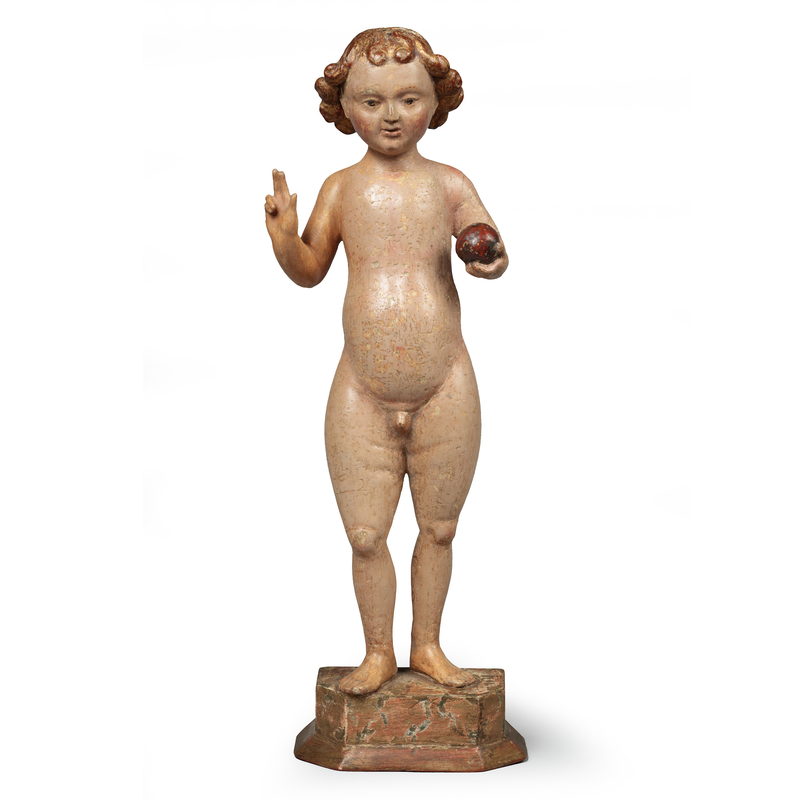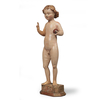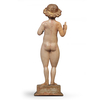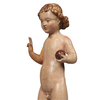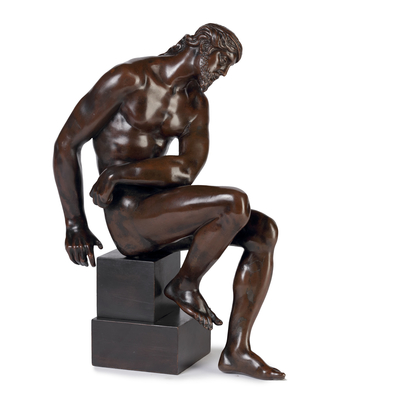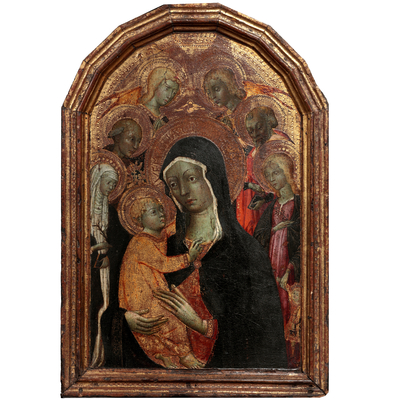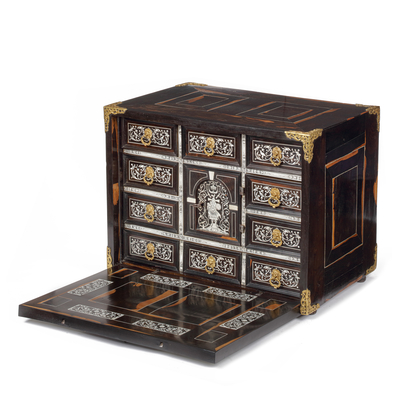Polychrome sculpture of the Infant Jesus
Global shipping available
- Origin
- Malines
- Period
- Early 16th century
- Material
- Polychromed and gilded basswood
- Height
- 46.5 cm
- Width
- 15 cm
- Depth
- 7 cm
- Literature
C. Ceulemans, ‘Ontstaan en betekenis van geklede beelden’ in: Mechels houtsnijwerk in de eeuw van Keizer Karel, Mechelen 2000, pp. 61 - 77.
Catalogus ‘Beelden in de Abdij, middeleeuwse kunst uit het noordelijk deel van het hertogdom Brabant’, Uden 1999, cat. no. 84, 85, p. 166, 167.- Museums
See for similar sculpture:
- Collectie Rijksmuseum Amsterdam, inv. no. BK-19710114
- Collectie Museum Catharijne Convent Utrecht, inv. no. StCC b2
Questions about this object?
Please use one of the contact options below:
Description
This polychrome sculpture of the Christ Child was made in Mechelen. The naked and somewhat plump Christ Child has his right hand raised in a blessing gesture and holds an orb in his left hand. He has a round face with blushing cheeks and his hair fans out in a golden halo of curls. The sculpture stands on a straight plinth with a sloping edge. The Christ Child was dressed for processions and special days. In the top of the apple is a hole for the attachment of a cross. The polychromy and incarnation are largely original.
Christ statues of this kind were mostly produced in Mechelen and became very popular in the German-speaking countries and the Burgundian Netherlands. The sculptures of the young Christ depict both his world sovereignty and his humanity. For special religious occasions, the statues of Christ were dressed with real clothes made of precious and richly decorated fabric. Wooden statues of Mary were also dressed in valuable cloaks and carried around.
